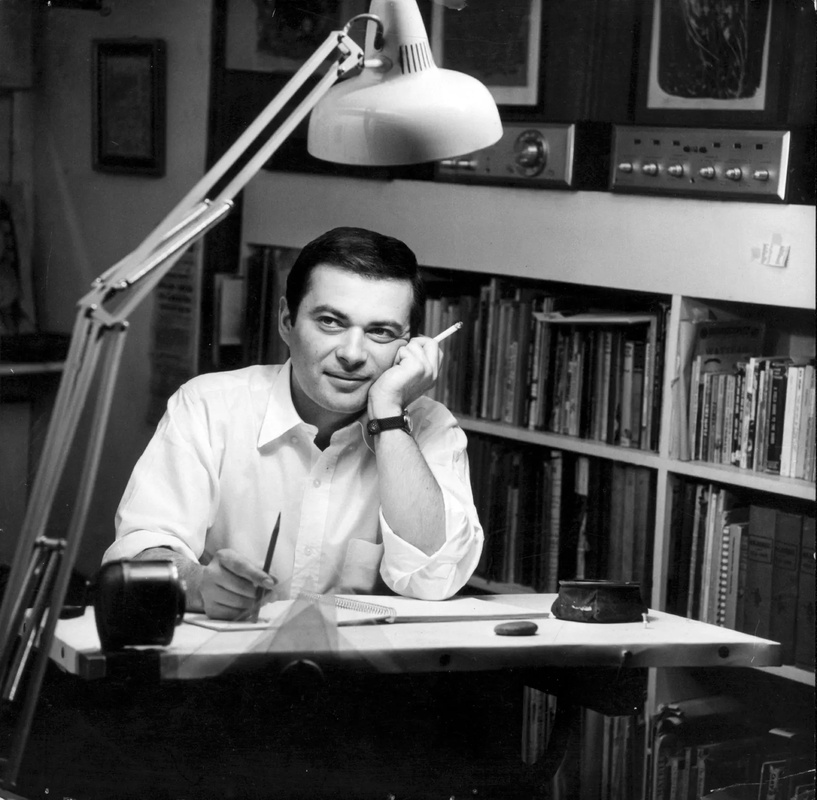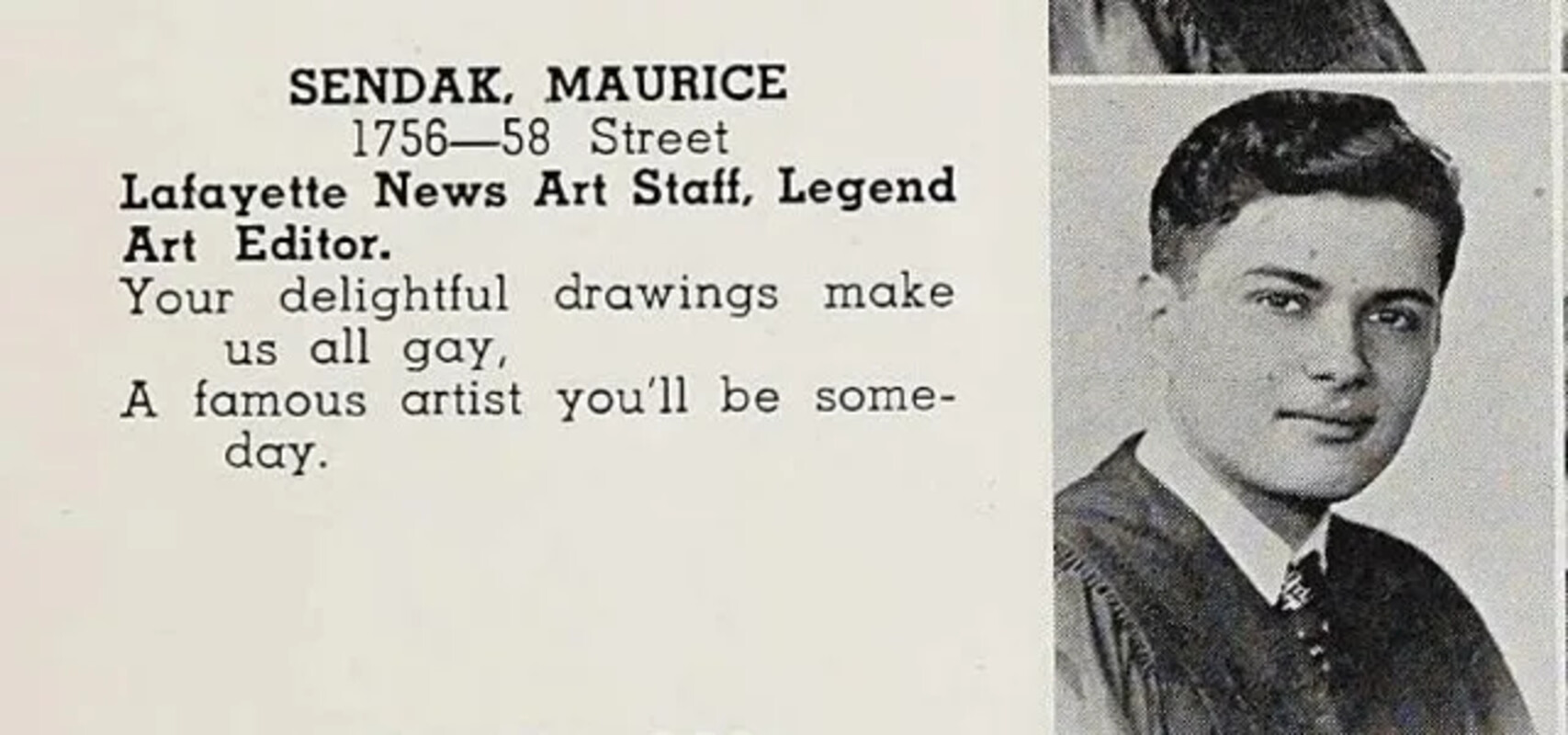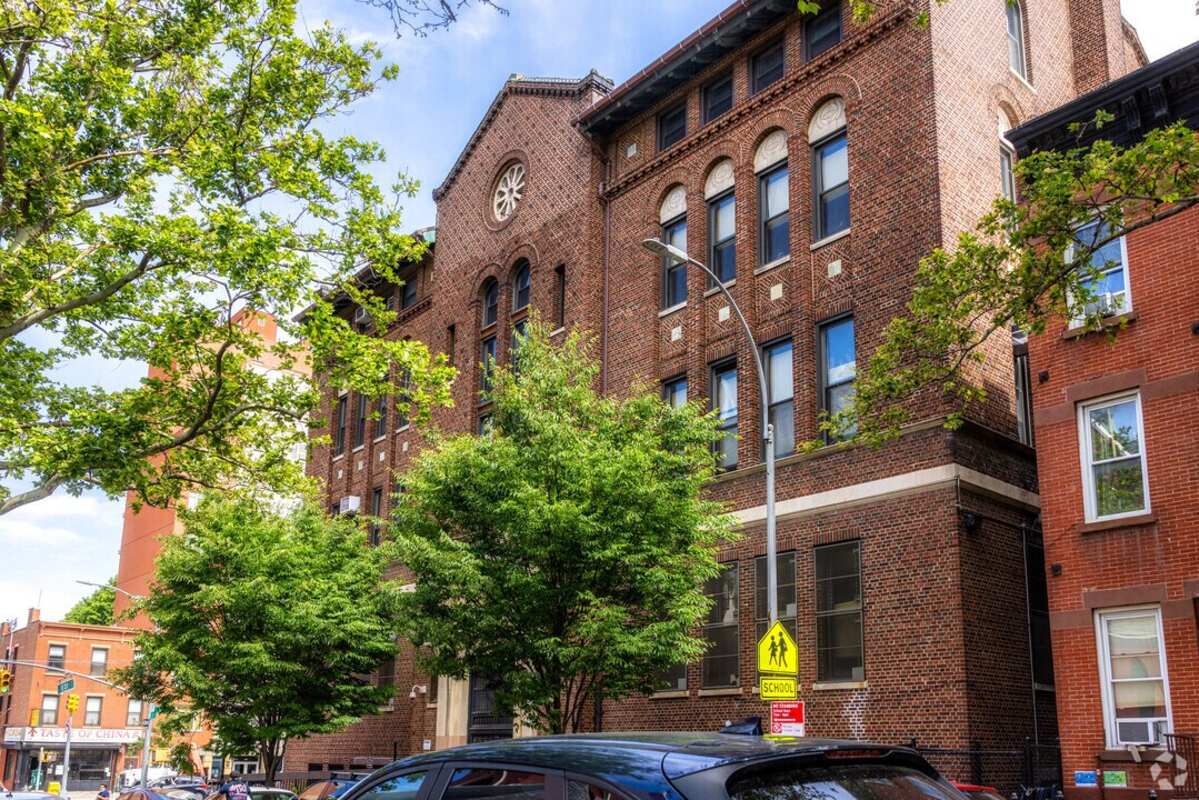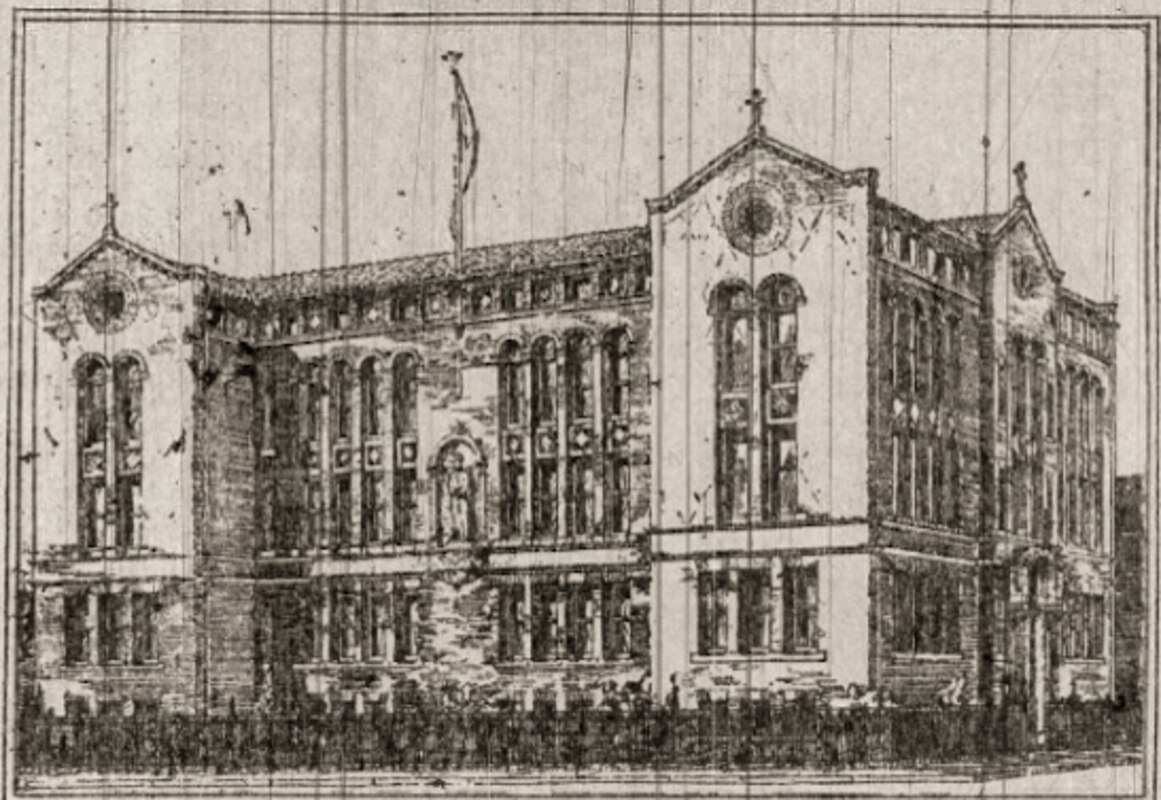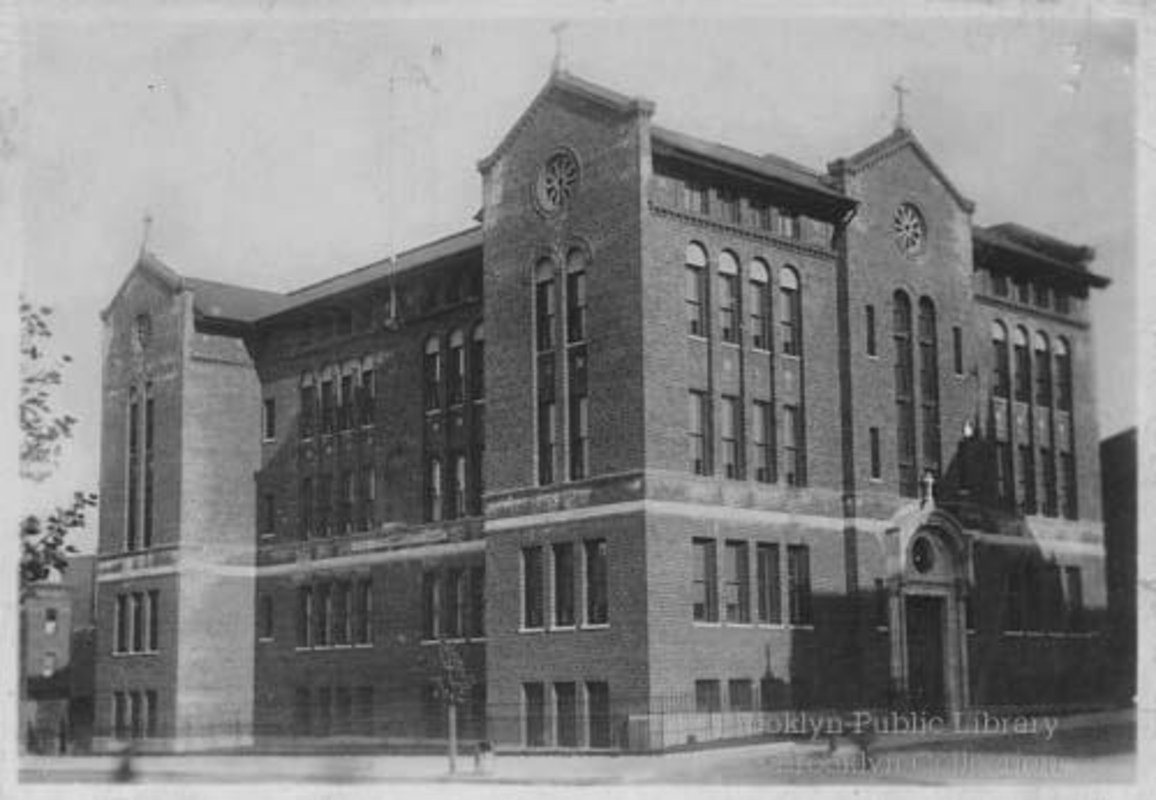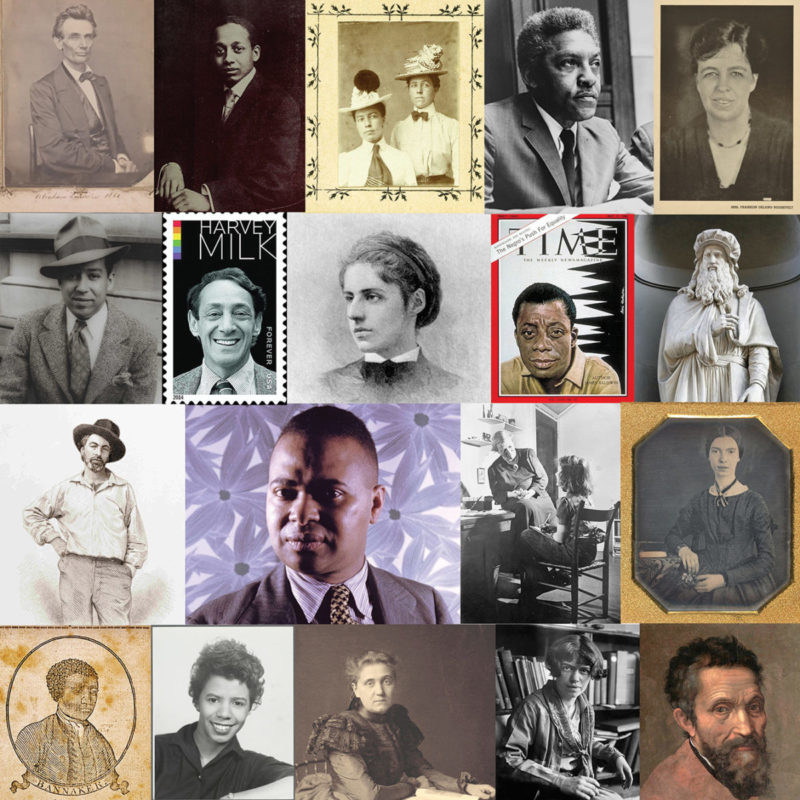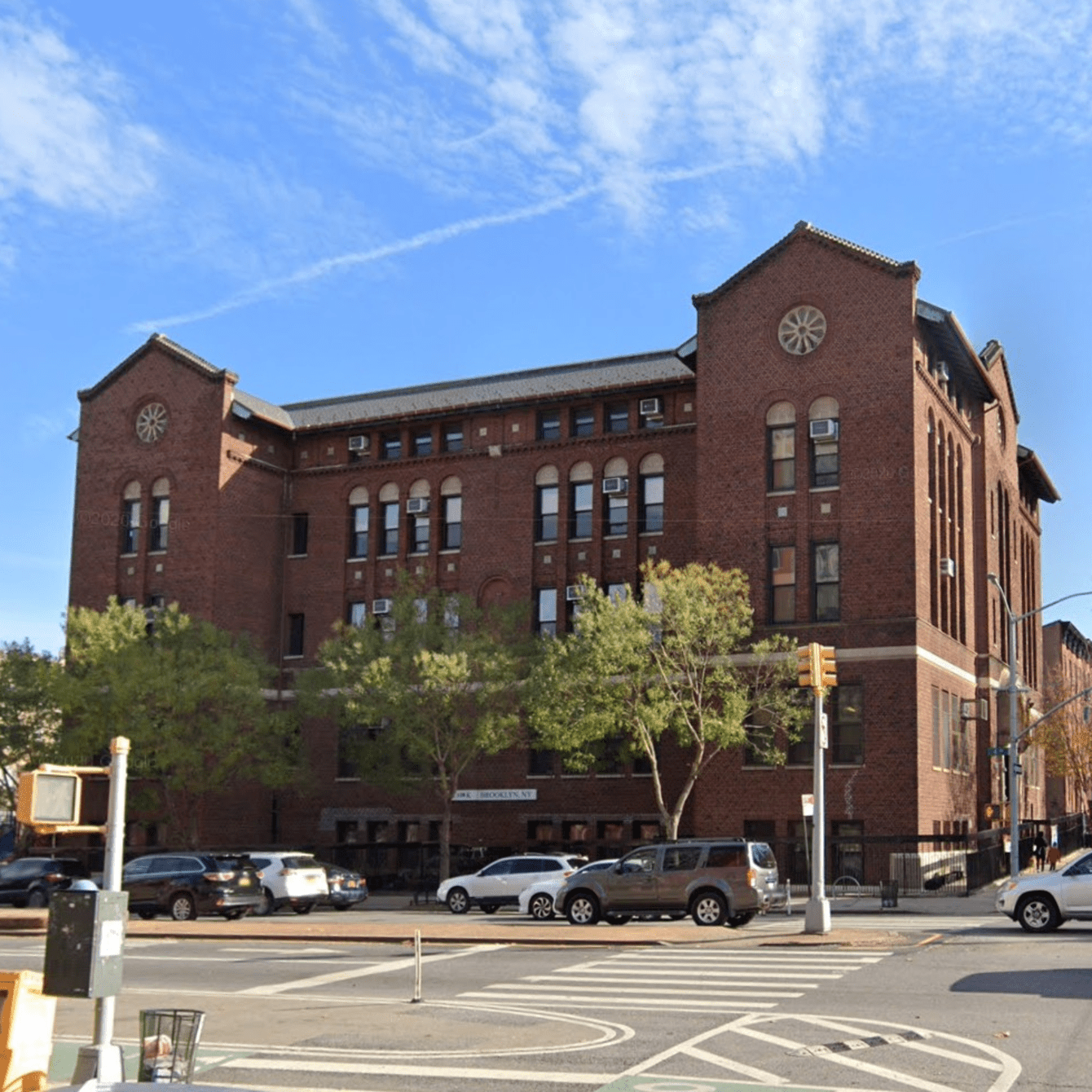
Maurice Sendak Community School (Public School 118)
overview
Many New York City public schools are named in honor of prominent figures in American and world history.
Maurice Sendak Community School (Public School 118), in Brooklyn, inadvertently honors an LGBT individual.
History
Many New York City public schools are named in honor of prominent figures in American and world history. The NYC LGBT Historic Sites Project compiled a list of the public schools named after gay men, lesbians, and bisexuals, although only one — Harvey Milk High School — intentionally honors an LGBT individual. This list includes Maurice Sendak Community School (Public School 118) in Brooklyn.
Opened in 2013, the school is named after Maurice Sendak (1928-2012), born in Brooklyn to Polish-Jewish immigrants, and regarded as the 20th century’s most important children’s book illustrator. The school’s website states that “In having Sendak’s artistic spirit animating our school, we hope to inspire students to find their own creative expression.” After illustrating other writer’s books in the early 1950s, Sendak began writing and illustrating his own books by the mid-1950s. He completed the text and illustrations for his best-selling picture book, Where the Wild Things Are (1963), inspired by his family in Brooklyn. This book earned Sendak the prestigious Caldecott Medal in 1964.
A selection of other books that Sendak worked on include The Animal Family (1965; illustrations only), Higglety Pigglety Pop! (1967), and In the Night Kitchen (1970). He also served as an early member of the National Board of Advisors for the Children’s Television Workshop, which was then developing Sesame Street (1969-present). In 1970, he became the first American to win the Hans Christian Andersen Medal for illustrators. President Bill Clinton presented him with the National Medal of Arts in 1996.
Towards the end of his life, Sendak acknowledged that he had kept his homosexuality hidden from his parents and the public, knowing that bias toward him being a gay man working in children’s literature would have negatively affected his career.
This school building was originally the St. Thomas Aquinas School (1916-17) by noted architects Helmle & Corbett.
Other sites on this website associated with Sendak include the Maurice Sendak Residence and Studio.
Entry by Jay Shockley, project director (December 2023).
NOTE: Names above in bold indicate LGBT people.
Building Information
- Architect or Builder: Helmle & Corbett
- Year Built: 1916-17
Sources
John Wilcock, “The Wonderful World of Maurice Sendak,” The Village Voice, September 26, 1956, 3-4.
Lisa Hammel, “Maurice Sendak: Thriving on Quiet,” The New York Times, January 5, 1973, 36.
Margalit Fox, “A Conjurer of Luminous Worlds, Both Beautiful and Terrifying,” The New York Times, May 9, 2012, A1, B20.
“Maurice Sendak,” Muppet Wiki, bit.ly/304la4C.
Patricia Cohen, “Concerns Beyond Just Where the Wild Things Are,” The New York Times, September 10, 2008, E1.
“P.S. 118 the Maurice Sendak Community School,” P.S. 118 The Maurice Sendak Community School, bit.ly/3Te20aj.
Saul Braun, “Sendak Raises the Shade On Childhood,” The New York Times, June 7, 1970, 34, 37, 40, 49, 52.
Do you have more information about this site?
This project is enriched by your participation! Do you have your own images of this site? Or a story to share? Would you like to suggest a different historic site?
